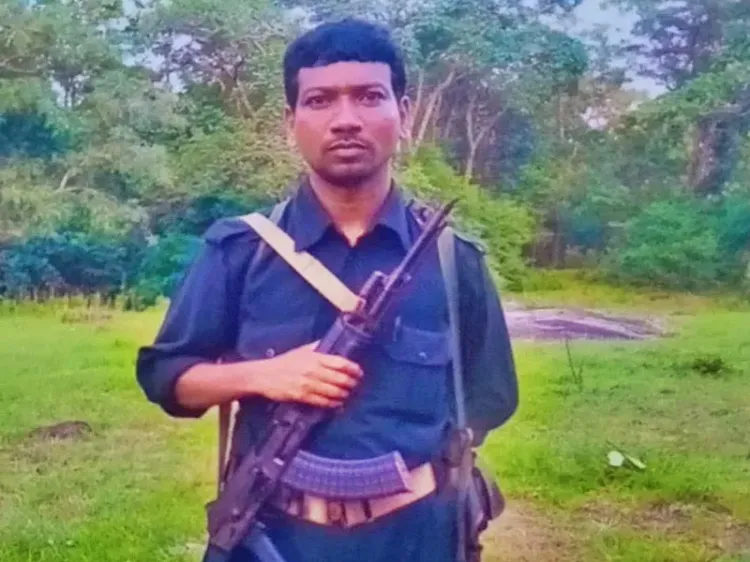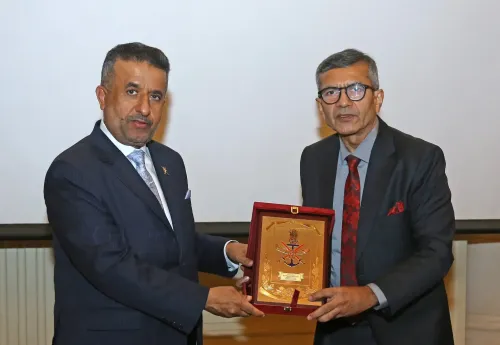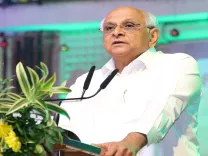Are Maoists Seeking Ceasefire Until February 2026 Following Hidma's Death?

Synopsis
Key Takeaways
- Maoists have called for a ceasefire until February 2026.
- Hidma's death has led to internal chaos within the group.
- The Chhattisgarh government remains committed to eradicating Naxalism.
- Security forces have effectively dismantled Naxal strongholds.
- The ceasefire could signal a change in Maoist strategy.
Raipur, Nov 24 (NationPress) In a significant development amidst ramped-up anti-LWE operations in Chhattisgarh, Maoist militants have put forth an urgent request for a unilateral ceasefire until February 15, 2026. This plea follows the recent neutralization of their top commander, Hidma, and the loss of several prominent leaders, which has caused widespread panic and prompted a necessary reorganisation within their ranks.
The appeal, directed to the chief ministers of Chhattisgarh, Madhya Pradesh, and Maharashtra, arrives just ten days prior to the Union government's deadline to eliminate left-wing extremism (LWE) by March 31, 2026.
Previously, Union Home Minister Amit Shah had firmly dismissed any calls for dialogue, emphasizing that the only options available were to either surrender or confront the might of the security forces.
Additionally, on Monday, Chhattisgarh's Deputy Chief Minister, Vijay Sharma, criticized those who rallied in support of the notorious Maoist leader Hidma. He challenged them to respond to the mass killing of Chhattisgarh's leadership in the Jhirum valley, where an IED planted by Maoists resulted in the deaths of 76 police officers and tragically, an eight-month-old child who was burned alive.
Simultaneously, the statement from the Special Zonal Committees of the three states, signed by the Maoist organisation's Politburo, indicates a public acknowledgment of their own vulnerability.
This comes in the wake of relentless operations by security forces that have effectively dismantled several Naxal strongholds, especially in Bastar, leaving the insurgents feeling frightened and scrambling to regroup. The elimination of Hidma, a feared commander responsible for numerous assaults on security personnel, has inflicted a significant blow to the group's command structure.
In a detailed press release, the Maoists declared a suspension of all People's Liberation Guerrilla Army (PLGA) operations, including any firing or combat activities, if the governments agree to halt military and combing missions during the proposed 90-day period.
According to them, this timeframe is crucial for internal reorganisation following the deaths of Central Committee Member (CCM) Yudhayya and other senior leaders.
“If the governments cease their aggressive actions, we commit to a complete ceasefire and are open to further dialogue,” the note mentioned, extending a hand that is both urgent and calculated.
However, the appeal carries an implicit threat; continued operations will trigger retaliation, the Maoists warned, highlighting their desperation.
They have also announced intentions to soon reveal the date for Yudhayya's memorial ceremony.
In a potential turning point, Politburo member Sonu Dada, with the backing of CCMs Satish Dada and Chandranna, has reportedly chosen to abandon the armed struggle. Sources suggest that a faction within the group is looking to disarm and reintegrate into society, seeking time from state authorities.
To facilitate this process, the Maoists are requesting safe passage for meetings with public representatives and journalists to publicly announce their surrender dates and accept rehabilitation packages, contingent on a pause in security operations.
Chhattisgarh Chief Minister Vishnu Deo Sai dismissed this overture as a mere stalling tactic, reaffirming the state's commitment.
“The end of Naxalism is just months away. By March 31, 2026, we will completely eradicate it,” CM Sai stated during a press briefing in Raipur. He articulated a vision for transforming Bastar, highlighting development initiatives and tourism promotion as means to heal the region's wounds.
“Peace through strength is our path; insincere appeals will not sway us.”









